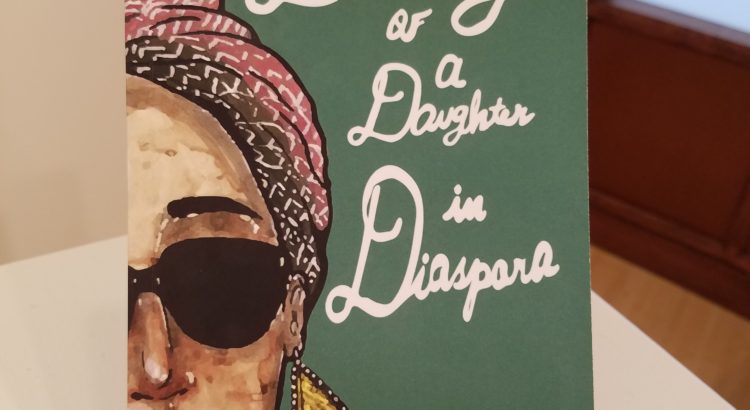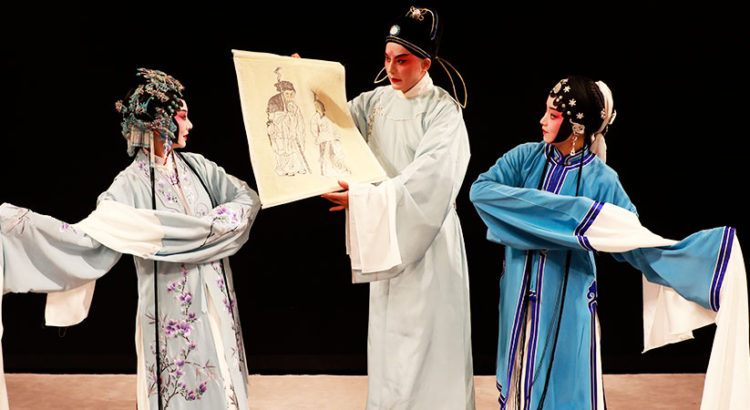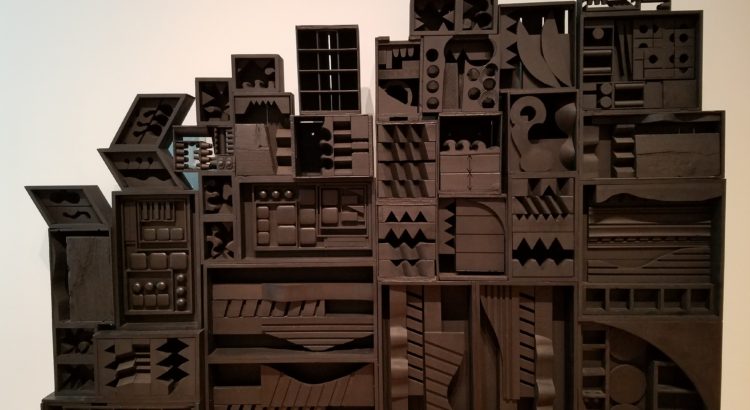The Martha Graham Dance Company’s performance last Friday night was fantastic. The four pieces which the troupe performed were a fascinating combination of new and old, literal and abstract, light and dark. The first piece was easily my least favorite. It was described as a rare comical piece choreographed by Martha Graham but I just personally didn’t enjoy the narrative which felt a little literal to me, and I will never understand artists’ obsession with Greek mythology and philosophers. However, the second piece was creepy and gripping. I loved the witchy, demonic feel of it all. I could have easily been convinced that I was witnessing a secret, pagan ceremony where the devil was being summoned. The second dance was also supposed to be based on Greek mythology and the story of Persephone, but it was not an obvious or literal translation. Deo was the recently premiered piece which was co-sponsored by UMS and I was quite impressed with it. After the intermission we came back to a similarly interesting and sometimes dark piece. The third dance was creepy in different ways though. The first movement featured three women in bland, grey uniforms which reminded me of communist East Europe dancing in and out of a strip of light. It was such a gripping effect, really displaying the power of lighting. When the women were not in this strip of light they ceased to exist on the pitch black stage. The third movement of this dance was not my cup of tea. It featured the full dance crew in prom dresses or little black dresses and the men in shirts and trousers which instantly set a strange tone to me. My boyfriend best described the dancing itself as being reminiscent of mannequins. However, the fourth piece was another Martha Graham original and it sold the show. The first movement featured a sole dancer in a black and red cape-skirt-thing, reminding me of a witch meets a flamenco dancer. She then danced with various parts of the female part of the dance crew, eventually wearing a black and white dress which had me instantly thinking of stormtroopers from Star Wars. The story behind this piece was interesting. Graham choreographed it after denying the chance to dance for the Third Reich leading up to WWII. It played well with the general theme of the show which was focused on women. Her piece in particular dealt with the consequences of war and the way women play into that narrative. I expected to be able to draw comparisons between this performance at that of Ballet Preljocaj, the modern ballet company. However, I found the two so different in tone that they can’t really be compared. If forced, I think I would end up saying I preferred the ballet, but it didn’t take quite as long for me to get into the Martha Graham performance as it took for me to be convinced that I liked ballet preljocaj.
Author: audreymg

REVIEW: The Dream
The Dream the Dreamers Dreamed was a small but impactful exhibit. It’s so easy to overlook GalleryDAAS and I think that’s symbolic of many students with marginalized identities’ experiences on this campus. The exhibit had pieces created by Black undergrad and graduate students here at Umich which symbolized various aspects of their experiences at the university whether it be direct reflections on their time here or the way art helps them process their experiences in this space. The breadth of this theme was evident in the pieces featured in the gallery. Without reading the exhibit description, it would be easy to struggle to find a common narrative. Some pieces were paintings of beautiful scenes while other were multimedia representations of the victims of police brutality. Yet other pieces were more abstract. One piece that caught my particular attention was the Diary of a Daughter in Diaspora. It was a small book of poetry by Bayan Founas on a stand in the middle of the room. I craned my neck to catch a glimpse at the pages without touching it, and there seemed to be print on the pages. I wanted to pick it up and read it but all my instincts tell me touching something in an art gallery is the number one no-no. I probably should have just asked the woman working in the gallery if this was an interactive piece. Now I will be forever curious about the poetry inside that book. What diaspora does the author identify with? How is that represented in their work? As a student at Umich, I’ve definitely been sleeping on GalleryDAAS and I’m a little sad that, as a graduating senior, I won’t be back next Fall to see what new exhibit they have.

PREVIEW: Martha Graham Performance
The Martha Graham Dance Company has come to Ann Arbor for two nights! The dance company is giving two different performances this Friday and Saturday night at the Power Center. I am going to the Friday night performance where Martha Graham will be performing four different dances with different choreographers. The first is Secular Games by Martha Graham herself, the second is Deo by Maxine Doyle & Bobbi Jene Smith which was co-commissioned by UMS, the third is Lamentation Variations by Aszure Barton, Nicolas Paul, and Larry Keigwin, and the last dance is I Used to Love You by Annie B. Parson. The Martha Graham Dance Company is the original, American modern dance company. There will also be a Q&A session after the performances with the dance company. I am really excited to see modern dance live. Ballet Preljocaj was fantastic but it interpreted ballet in a far more modern fashion than expected. I’m curious to see what similarities and differences there are between the dance stylings of the two.

Review: The Lute
It is so cool that the Chinese opera came to Ann Arbor this past weekend and, while I don’t think I’ll become an avid fan of the art form, I’m really glad that I can say I’ve had the experience. I didn’t realize that this performance is in honor of the Confucius Institute ending its ten year contract with Umich. Apparently the University is planning on better incorporating the study of Chinese culture and history into its academics in lieu of a continued partnership with the Institute. However, I find it hard to believe that the University will be able to do so to the extent of the Confucius Institute and its programming, such as going to Chinese Americans’ homes for traditional cooking and cultural exchange. The director also stressed the difficulty in planning the opera’s visit to Ann Arbor during opening remarks Saturday night which makes me wonder if the current state of US-Chinese politics has something to do with it.
The performance itself was vibrant and expressive. While the singing wasn’t quite my cup of tea, I loved the costumes made of beautiful mixes of bright and pastel silk, interesting hats, and jewel encrusted headdresses. I especially appreciated that the performance featured a translation which was projected onto the back wall of the stage throughout the show. In my experiences with European opera you’re usually expected to know the German/Italian or just follow along based on the acting and music.
My expectation that the storyline would feel different from the typical European opera was correct. When I read the description of the story before seeing the performance I expected the opera to follow Cai Bojie’s trip to the capital and his first wife’s struggle to care for his parents then end with their reunion. Instead, the performance started with Cai Bojie finding his wife’s painting of his parents in the temple and focused mainly on hum reuniting with his first wife and the second wife coming to terms with the situation. While it felt a bit abrupt, like we had started in the middle of a story, it tracks with what I’ve been told and experienced in non-western storytelling as this opera focused on the human relationships and emotions rather than a grand quest.
Image courtesy of the Michigan Theater.

REVIEW: The Public
What an interesting movie. It managed to tackle some of the hardest social issues that we are facing today, but it was also comical and uplifting. The movie felt real. The cinematography almost felt like it was from a high quality documentary and the movie didn’t feel overly polished or perfect. It was perfectly down to earth and genuine. The many actors and extras playing homeless men throughout the film felt authentic and even led me to question if the production included current or former homeless folks in the cast or as extras. The movie wasn’t perfect. The female characters in particular felt a bit off. The female librarian and main character’s love interest felt like caricatures of real women with the first being the stereotype of a social justice warrior hipster while the second was kind of like a manic pixie dream girl, taking manic to the max. Despite this lack in character development, the script treated its homeless characters well. It didn’t try to romanticize the homeless or show them as perfect; it showed the mental illness and drug and alcohol addiction that plagues the community. However, it also showed their humanity and background. We learned that many of them were veterans, came from families, had lives in the past. We learned about camaraderie that exists within this community. The audience also got to see that homelessness is not permanent. There are people like the main character who turn their lives around. Meanwhile, we also got quite a few laughs and left with a general feeling of joy and promise. The entire theater burst out in laughter when 100 men came out of the library completely naked singing in unison. However, that amusement was tinged with just a bit of sadness when one character said “they’ll never forget this” and the audience knew that this story would be like any in the world today where the forgotten and oppressed continue to be forgotten and oppressed.
Image courtesy of medium.com.

REVIEW: Abstraction, Color, and Politics in the 1970s
The title of this exhibit has more words than the exhibit has paintings. With such a long, dramatic title, I have to admit that I was expecting more. The room where the exhibit is featured isn’t really a room. It looks like the entrance to a much bigger gallery, and it is, but the rest of the gallery is full of other exhibits. The room is more of an entrance way, which is appropriate for its four art pieces. The first piece that you see is the pink and orange draped canvas featured in my preview. A painting hangs on the wall to the right depicting a sunset in a similar family of colors. Look to the left and things make a bit less sense when you see the geometric array of color blocked canvases fitting together to create what looks like an optical illusion. The last piece is entirely made of black, painted wood. It reminded me of a collage in that it felt like a collection of unrelated wooden objects brought together and placed on shelves. I simply could not figure out what made these pieces political, and I can make just about anything political. I see the abstraction and color but I struggle to understand what meanings these pieces represent or the messages they meant to convey. The titles weren’t much help with this either as they were equally vague and abstract. I can appreciate abstract art, but this kind of abstraction from a period when it wasn’t quite new enough to be considered rebellious, just isn’t political in my eyes.


